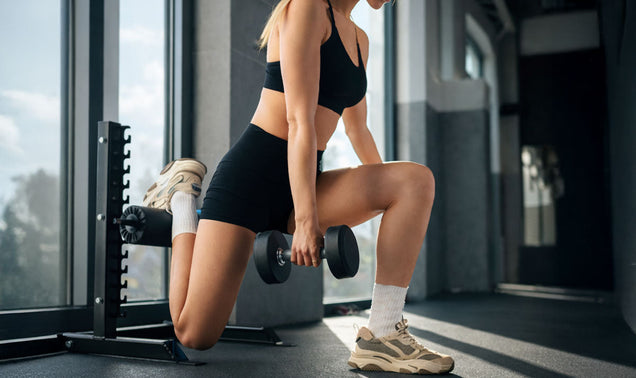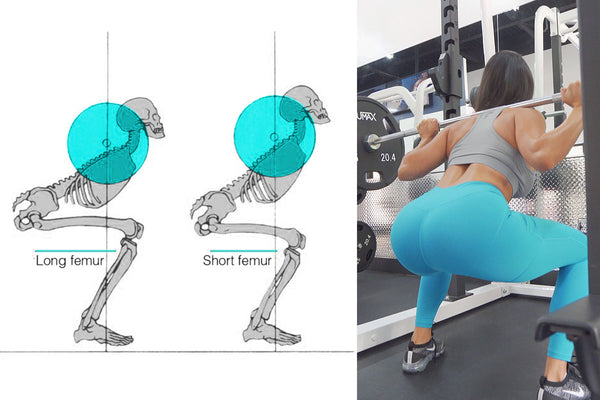When it comes to leg training, you’ll likely encounter two dogmas:
- If you want big legs, you have to perform barbell back squats, and
- When you squat, you have to squat ass-to-grass (ATG)
If you’ve heard this nonsense spouted on social media by fitness “gurus”, then let us be the first to tell you that in fitness there really are few (if any absolutes).
You do not “have” to squat to build bigger, stronger, and more toned legs, and provided that you can squat, you do not have to squat ass-to-grass.
We’ll agree that the squat pattern is a primal movement and everyone should perform some type of squat in their training program.
But, that doesn’t mean you necessarily have to squat with a bar across your back.
The only time a barbell back squat is an absolute necessity is if you are a competitive powerlifter, or have aspirations of competing one day.
If you’re not a powerlifter, then you do not have to perform back squats. You could perform one of the following squat variations:
- Goblet Squats
- Front Squats
- Kettlebell Squats
- Landmine Squats
- Box Squats
- Split Squats
- Bulgarian Split Squats
You see, not every person is built to squat with a barbell on their back due to a number of reasons including:
- Ankle mobility
- Hip mobility
- Hip anatomy
- Femur length
- Injury history
Today, we’ll focus specifically on how an individual’s femur length can affect their squatting mechanics.
Let’s get started!
How Femur Length Affects Squat Mechanics
In order to be as efficient as possible (and thus generate the greatest amount of force, power, and strength), you want the bar to remain over the middle of your foot as you squat up and down.
If, when you squat, the bar is behind or in front of the midfoot, a massive “energy leak” is created in the system, which means not only are you losing out on pushing as much weight as you can, but you also increase your risk of falling forward or backward as well as seriously injuring yourself.
So, what does this have to do with femur length?
Well, the longer your femur is, the more your torso will have to pitch forward in order to keep the bar over the midfoot as you squat and stand back up. Due to this particular anatomy, lifters with longer femurs relative to their torso will likely find it difficult to back squat in the high-bar setup. They’ll likely have to use the low-bar back squat should they want to perform barbell back squats. Squatting low-bar (and using a more tilted torso) will increase the movement at the hip and decreases the movement at the knee, which means you’ll “feel” the exercise more in your glutes and hips than you will the quads.
As a result, you may also hear that individuals with longer femurs relative to their torso are not “built to squat” as their anatomy does not put them in as favorable position to move the weight up and down while maintaining a mostly vertical torso. As such, you might hear people say these individuals aren’t squatting properly.
But, here’s the thing. How a person squats (as we’ve already mentioned) is highly variable depending on their anatomy, mobility, and injury history. People with longer femurs and shorter torsos will have to have more forward tilt if they want to high-bar squat, or they will have to play with their stance width if they want to high bar squat and maintain a more vertical torso.
Athletes with longer torsos and shorter femurs are naturally more suited (“built”) to high bar squat with an upright torso as well as squat deep (ass-to-grass style).
Things to Improve Squatting Mechanics
Now, let’s say you’re someone who struggles to maintain an upright torso when you squat.
Is there anything you can do to improve your ability to do so?
You bet there is!
Elevating the heels (either by wearing weightlifting shoes or placing your heels on small 2.5-5 pound plates) can help.
Another option for long femurs lifters is to widen their squatting stance and use more abduction (driving the knees out as you drop down into the squat).
Finally, working on the mobility in the hips and ankles may also help improve squat depth and your ability to squat with a more upright torso angle.
Takeaway
We all have different bodies, and as such, no two people will squat identically (or perform any other lift exactly the same way for that matter).
If you are an individual who is “built” to squat, congratulations! You’re the envy of many lifters.
If you’re not genetically gifted with the anatomy and mobility to high-bar back squat, that’s ok. There’s no “rule” that says you have to squat high-bar style, or back squat, period...that is unless you want to compete in powerlifting.
If you’re hell-bent on high bar squatting but experience certain limitations, you can work on ankle and hip mobility as well as experiment with slightly elevating your heels or widening your stance...
If you’re just looking to get fit, build some muscle, and burn some body fat, the barbell back squat isn’t a requirement -- it’s one of many options.
There are a vast number of squat variations you can perform that will satisfy the requirement of including some type of squat pattern in your training program. If back squats aren’t for you, that’s ok, find a variation that is and commit to increasing your strength and reps completed in it.






